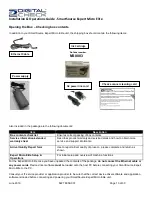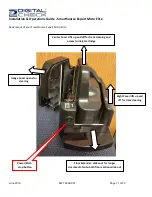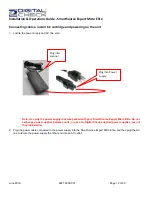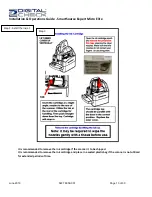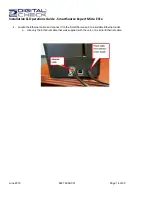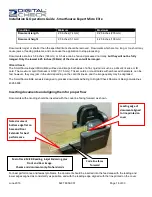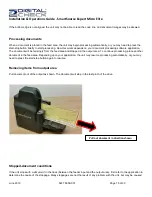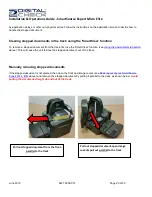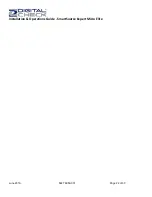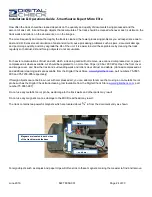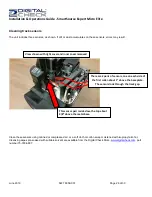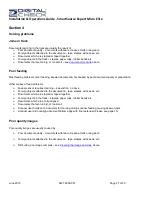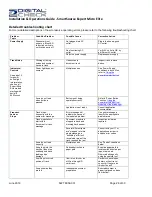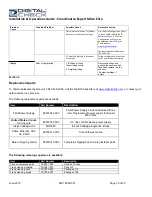
Installation & Operations Guide - SmartSource Expert Micro Elite
June 2019
8227 6059-001
Page 24 of 30
How often the track should be cleaned depends on the quantity and quality of documents being processed and the
amount of dust, dirt, ink and foreign objects that accumulates. The track should be cleaned whenever dust is visible on the
track walls and rollers, on the documents, or on the images.
The more-frequently and more-thoroughly the track is cleaned, the fewer processing problems you will experience due to
dust and dirt. Excessive accumulation of dust and dirt will cause processing problems such as jams, document damage
and poor image quality, and may degrade the life of the unit. It is easier to avoid these problems by cleaning the track
regularly so that dust, dirt and foreign objects do not accumulate.
For heavier accumulations of dust and dirt, which a cleaning card will not remove, use canned compressed air, or piped
compressed air where available. Air should be regulated to no more than 30 psi (2.0 bar, 200 kPa). Open the front cover
and image cover, and blow the track and surrounding walls and rollers clear of dust and debris. (Canned compressed air
and additional cleaning cards are available from the Digital Check Store,
part numbers 75-0501-
900 and 75-7200-995 respectively)
If foreign objects cannot be blown out with compressed air, you can attempt to remove them using a non-metallic tool or
probe such as the Digital Check track-cleaning tool (available from the Digital Check Store,
, part
number 75-0381-907).
Do not use any metallic tool or probe, as damage to the track walls and other parts may result.
Do not use any magnetic tool, as damage to the MICR read head may result.
The track contains two powerful magnets which are located about
¾”
in from the document entry as shown.
Foreign objects such as staples and paper clips will often stick to these magnets, making them easier to find and remove.
Magnets are located in both sides
of the track towards the base
plate…
…here…
… and here.

